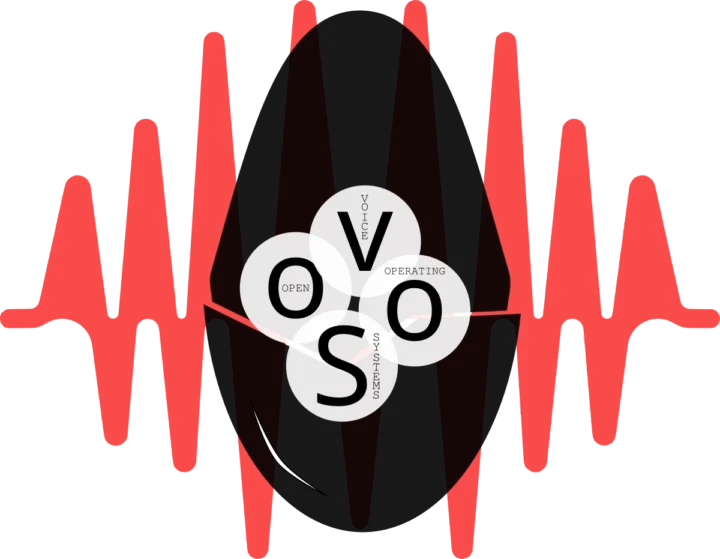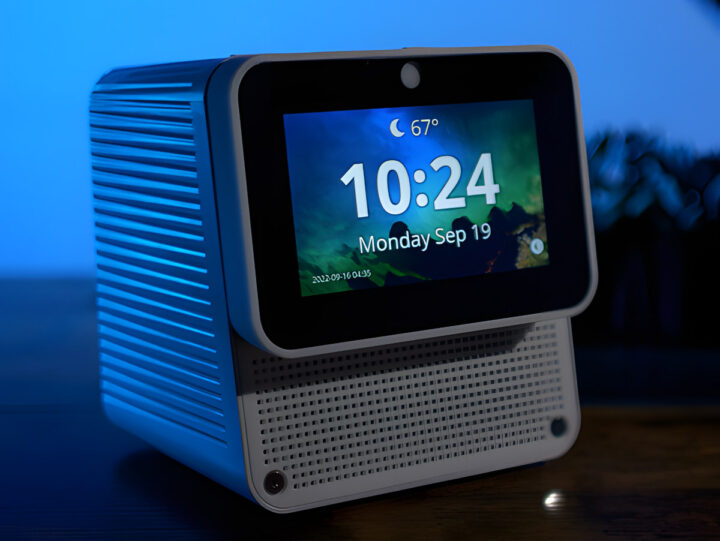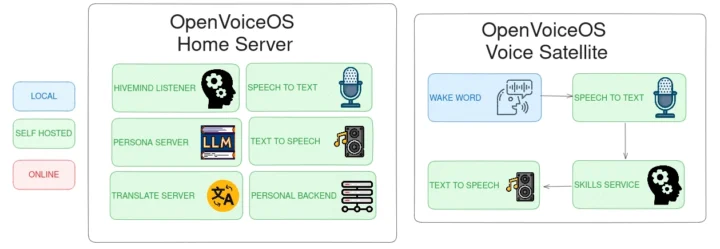The OpenVoiceOS Foundation, or OVOS Foundation for shorts, is a non-profit organization dedicated to advancing open-source voice assistant technology and offers an open-source privacy-focus alternative to voice assistant by large companies like Amazon, Google, and Apple.
One of the founders, Peter Steenbergen (j1nx), explained to us it all started when he read an article on CNX Software about Mycroft Mark II voice assistant hardware in 2018. He ended up being involved and created “MycroftOS“, later renamed to “OpenVoiceOS – Mycroft Edition”, as a Just Enough OS utilizing Buildroot and working on the Mark II. There were some tensions with the open-source community at some point, and the Mycroft project went south from there and the company had to close in 2023.
Eventually, OpenVoiceOS took over the codebase of Mycroft A.I. and managed to merge lingering PR from the open-source community. Together with NEON A.I., they took over the Mycroft A.I. community forums, which now reside at https://community.openconversational.ai/, and Peter decided to open the OPenVoiceOS Foundation along with partners in 2024, but it’s just now been approved by the Dutch government. You can read more about the history of the project in the About section of the website.
Fast forward to today, OpenVoiceOS is now split into multiple modules:
- ovos-messagebus – The BUS all different modules talk over to each other.
- ovos-core – The main system that handles all skills. Basically the brain of it all and is fully Mycroft A.I. skill compatible.
- ovos-listener – Access to your microphone that handles the keyword, STT, etc… again fully modular by plugins. You can fully choose your wake-word plugin (the default is still “Hey Mycroft”). You can choose any STT plugin of your liking be it on-device, on-premises, or online.
- ovos-audio – Access to your speaker. Plugin-based so the user chooses TTS (on-device, on-premise, or online). Basically everything that relates to sound output.
- ovos-phal – Platform/Hardware Abstraction Layer. A plugin-based system to handle and provide anything from hardware integrations (HATs, The Mycroft A.I. Mark1, The Mycroft A.I. Mark2, etc.) or system integrations (Network manager, Keyboard input, Camera, etc.)
- ovos-gui – The Graphical User Interface. The GUI has been split up into two systems: a bus to extend the messagebus for GUI-related communication and the GUI itself. The default is still the KDE Qt-based GUI, however, vastly falling behind as AIX the lead developer is pursuing other endeavors and there’s no Qt developer within the community any longer. An HTMX version is currently also being worked on as a lightweight alternative and the GUI’s can now even run on completely different devices if wanted.
Modules can be optional, so if you only want a headless device and create a Google Home mini type of device, you can also leave the GUI out, or if the user just wants to create a chat box/webchat, only the messagebus, core and related plugins are needed. OpenVoiceOS (OVOS) can be installed on any Linux machine, but there’s a minimal image based on buildroot and a Raspberry Pi-optimized image for OVOS
You’ll find the source code on GitHub and documentation with links to pre-built images and instructions on GitHub.io.
The project is complemented by HiveMind, a separate project of jarbas, the lead Python developer of the OVOS project, that allows all the different OpenVoiceOS framework modules to be split over multiple devices. Peter explains further:
This extends the message bus(‘s) to talk over the network with all associated security mitigations involved. This allows for instance to lift all the heavy duty over to a beefy server and have small low resource “satellites” to talk to it. So the core skill/phal systems run on a big server, while on a low-resource device, you just only run the listener for the microphone and the audio for the sound output. The best and most current example would be to run your own Home Assistant Voice cloud server and Home Assistant voice satellite.
In some ways, the OpenVoiceOS Foundation is the equivalent of the Open Home Foundation, but for voice assistants, and it aims to safeguard the developer’s community and the development of the whole framework against commercial interests. So the project lives on even if one of the main sponsors disappears due to bankruptcy or otherwise. Some current partners making use of OVOS include Visiolab, Royal Visio Foundation for blind and vision-impaired people who have tested the solution in their internal lab, and WASABI EU Project /| COALA Augmented Manufacturing Analytics which aids factory workers in performing time-consuming and information-intensive tasks.
Additional information may be found on the foundation’s website.

Jean-Luc started CNX Software in 2010 as a part-time endeavor, before quitting his job as a software engineering manager, and starting to write daily news, and reviews full time later in 2011.
Support CNX Software! Donate via cryptocurrencies, become a Patron on Patreon, or purchase goods on Amazon or Aliexpress







